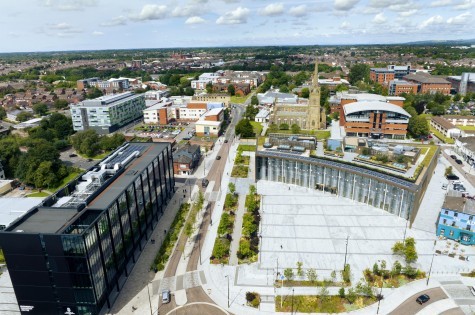In the fast-paced world of supply chain management, optimizing logistical elements is paramount to ensure streamlined operations and maximize efficiency. One crucial aspect of this optimization process is warehouse design.
A well-designed warehouse can significantly enhance supply chain efficiency, reducing costs, improving inventory management, and enhancing overall customer satisfaction.
In this article, we will delve into the logistical elements of warehouse design and explore key factors to consider when striving for supply chain excellence.
Layout and Space Utilization
Efficient utilization of space is fundamental to warehouse design. An optimal layout ensures smooth material flow, minimizes travel distances, and maximizes storage capacity.
One commonly used approach is the "ABC analysis," which categorizes products based on their demand velocity. High-demand products should be placed closer to the shipping area for quick access, while slower-moving items can be placed further away.
Moreover, implementing an intelligent racking system, such as selective, push-back, or pallet flow racks, can enhance storage density and facilitate easy access to inventory.
Utilizing vertical space through mezzanine floors or automated storage and retrieval systems (AS/RS) can further increase storage capacity without expanding the physical footprint of the warehouse.
Inventory Management and Order Fulfillment
Efficient inventory management is vital for supply chain efficiency. Warehouse design should focus on optimizing the flow of goods and minimizing inventory holding costs. To achieve this, implementing a robust Warehouse Management System (WMS) can provide real-time visibility, enabling accurate inventory tracking, efficient order picking, and cycle counting.
Strategically positioning packing and shipping stations close to the loading dock can minimize order processing time and expedite order fulfilment. Moreover, adopting technologies like barcode scanning, RFID, or automation can significantly reduce errors, increase accuracy, and expedite the order verification process.
Material Handling Equipment and Technology
The choice of material handling equipment and technology plays a pivotal role in ensuring efficient warehouse operations. Employing the right equipment can streamline material flow, reduce labour costs, and minimize the risk of accidents. Forklifts, reach trucks, pallet jacks, and automated guided vehicles (AGVs) are common examples of equipment used for transporting goods within the warehouse.
Furthermore, implementing technology solutions such as warehouse control systems (WCS), voice picking systems, or robotics can automate repetitive tasks, optimize order picking routes, and reduce human errors. Robotics and automation, in particular, can significantly increase efficiency by automating processes such as palletizing, sorting, and packing.
Optimizing Workforce and Training
Efficient warehouse design should also take into account the optimization of the workforce. Designing workstations ergonomically and ensuring proper equipment training can improve productivity and reduce the risk of injuries.
Cross-training employees across different tasks and implementing a flexible workforce management system can enhance operational flexibility and enable efficient workforce allocation based on demand fluctuations.
Additionally, investing in continuous training programs and fostering a culture of continuous improvement can empower employees to identify and implement efficiency-enhancing initiatives, resulting in a more agile and productive workforce.
Conclusion
Warehouse design plays a crucial role in optimizing supply chain efficiency. By focusing on the logistical elements of supply chain operations, such as layout and space utilization, inventory management, material handling equipment, and workforce optimization, businesses can significantly enhance their operational efficiency and gain a competitive edge in today's dynamic marketplace.
As technology continues to evolve, embracing emerging trends such as automation, robotics, and data analytics will further revolutionize warehouse design and enable businesses to adapt to the ever-changing demands of the supply chain.
By prioritizing the design and continuous improvement of their warehouses, companies can achieve higher levels of efficiency, reduce costs, and deliver exceptional customer experiences.
North Star Projects has tailored a specialised warehouse design program that takes you through every step of bringing your desired requirement to life, for further questions or to speak to our dedicated design team please contact [email protected]
Enjoyed this? Read more from North Star Projects


















